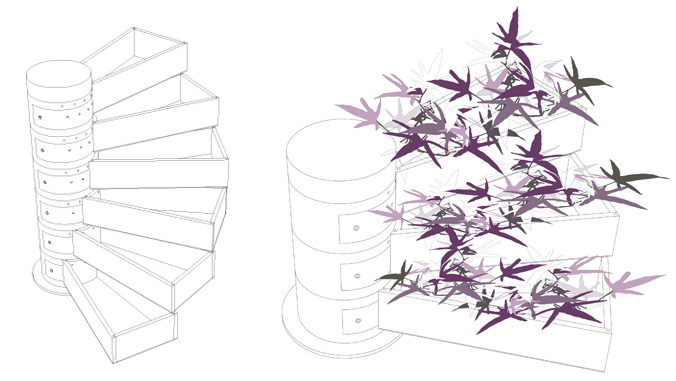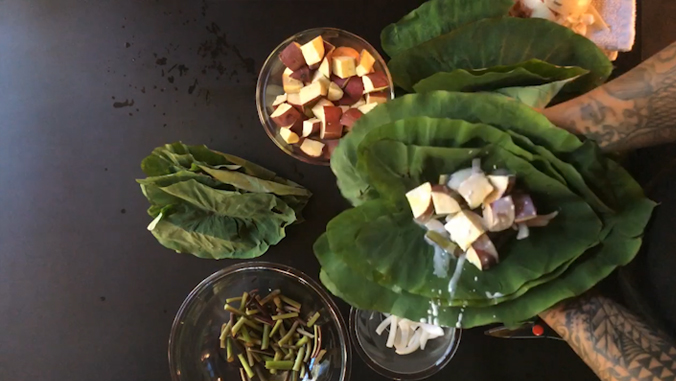
Growing fresh produce from your home can be difficult when gardening space is limited. That inspired a graduate student in the School of Architecture at the University of Hawaiʻi at Mānoa to design a structure that mimics how sweet potatoes grow in their natural environment, but is portable enough that people can grow sweet potatoes on their lānai.
B. Keolamaikaʻi Annino is a graduate student pursuing a masters of landscape architecture and a doctorate in architecture. Annino’s inspiration for his ARCH 696 project was influenced by two factors, the effects of the current COVID-19 pandemic and Hawaiʻi’s continued reliance on outside food sources when fresh produce can be grown locally.
“It would take a significant effort to continuously grow enough food to feed ourselves, and our families, with a home gardening system,” said Annino. “The point of my design was to give people a way to supplement some of their nutritional needs with a home gardening system that can be utilized in densely packed urban areas that have very limited land.”

In the landscape architecture research seminar, students were asked to research a plant, its place of origin, its migration around the world, and its physical, phenological and morphological characteristics. They then examined how the plant could be used and how it had been used culturally and commercially in the past. In the last phase, which was cut short due to the COVID-19 pandemic, students were asked to speculate how their plant could be used today. This was the portion of the project where Annino introduced the possibility of growing sweet potatoes in a system that can be easily adapted to a lānai.
Sweet potato system
The structure was designed to mimic the spiral pattern that a sweet potato grows along its central stem or vine. By doing this, the system allows the sweet potato to grow as it would in its natural environment, along hillsides. The user would have to guide the sweet potato along an upward path for continued growth but this function is only to allow them to harvest one layer at a time.
Sweet potatoes typically take three or four months to grow from slips, small offshoots from the storage root. In the structure Annino designed, people can transplant sweet potato slips to boxes and in three or four months, the vines will start to yellow, signifying that it’s time to harvest.
“I wanted to make a system that can provide some sort of source to supplement where we get our food while keeping it relatively simple and low maintenance,” said Annino. “But, given this pandemic and the fact that we are adjusting to a life where we are at home more, I thought it would be nice to still have the convenience of a low maintenance system that people could enjoy watching their sweet potato plants grow knowing they’ll eventually have food to eat.”
The structure is designed to hold a few pounds of sweet potatoes per harvest. Annino plans to build a prototype of the system this summer using simple household items.
—By Sarah Hendrix


